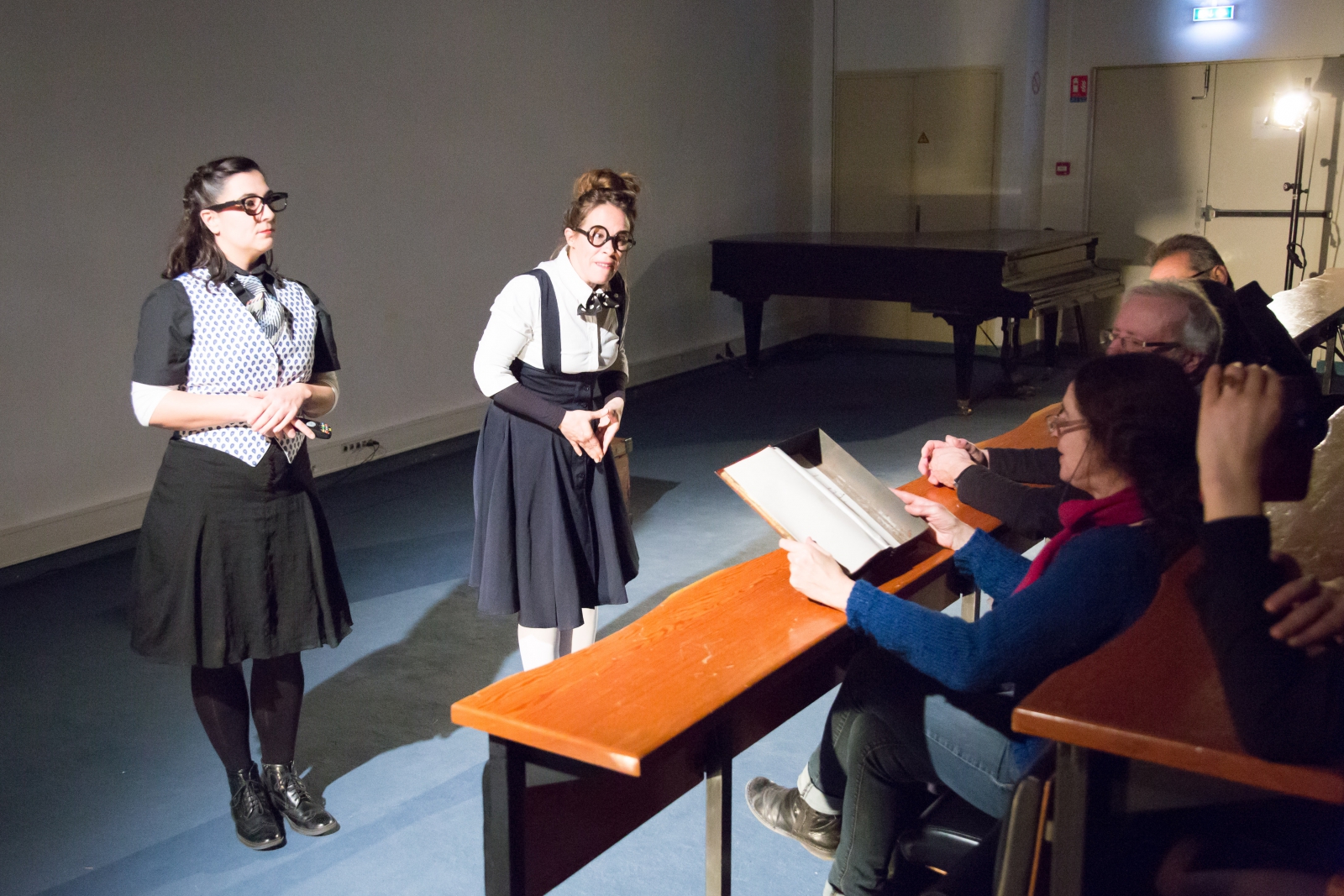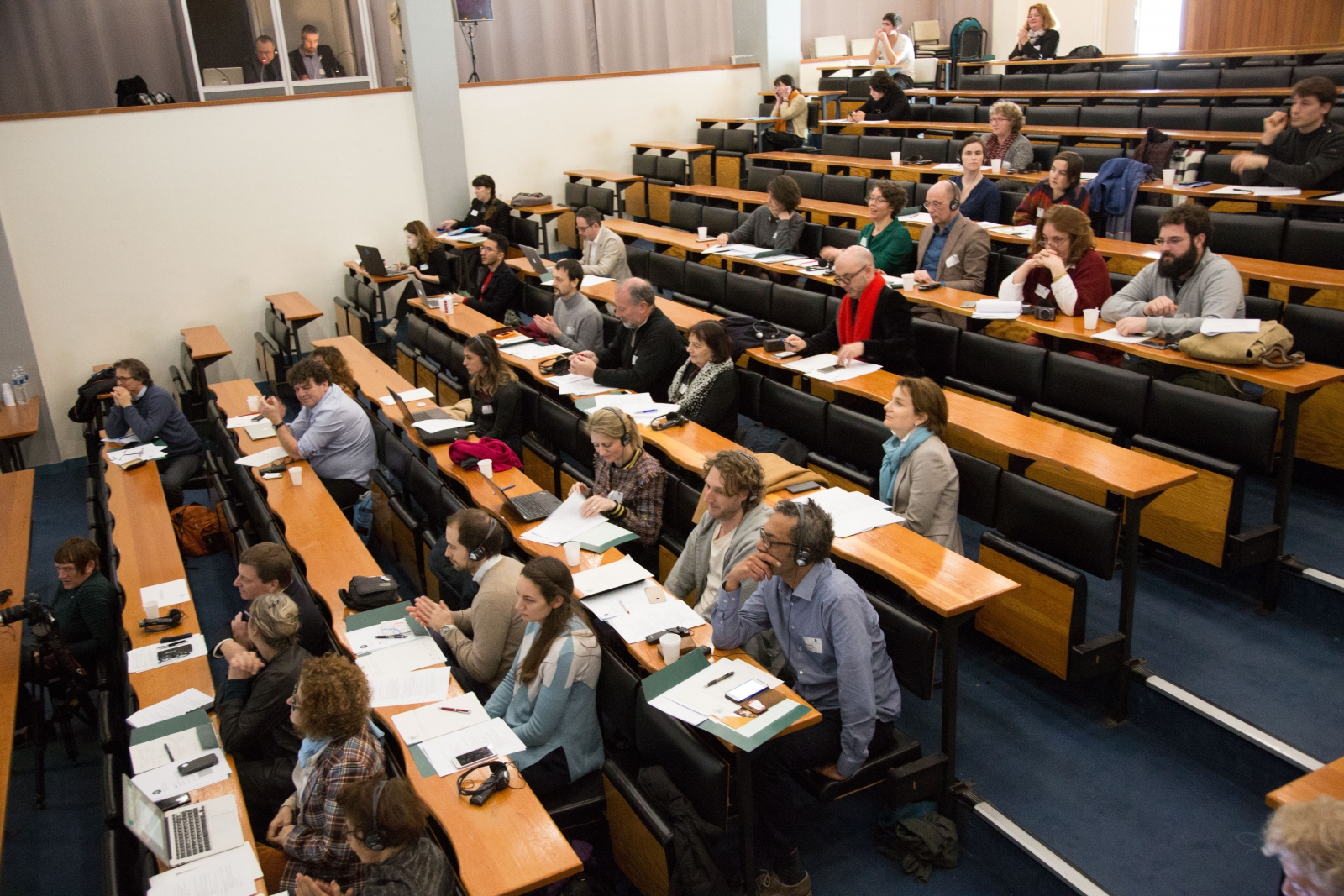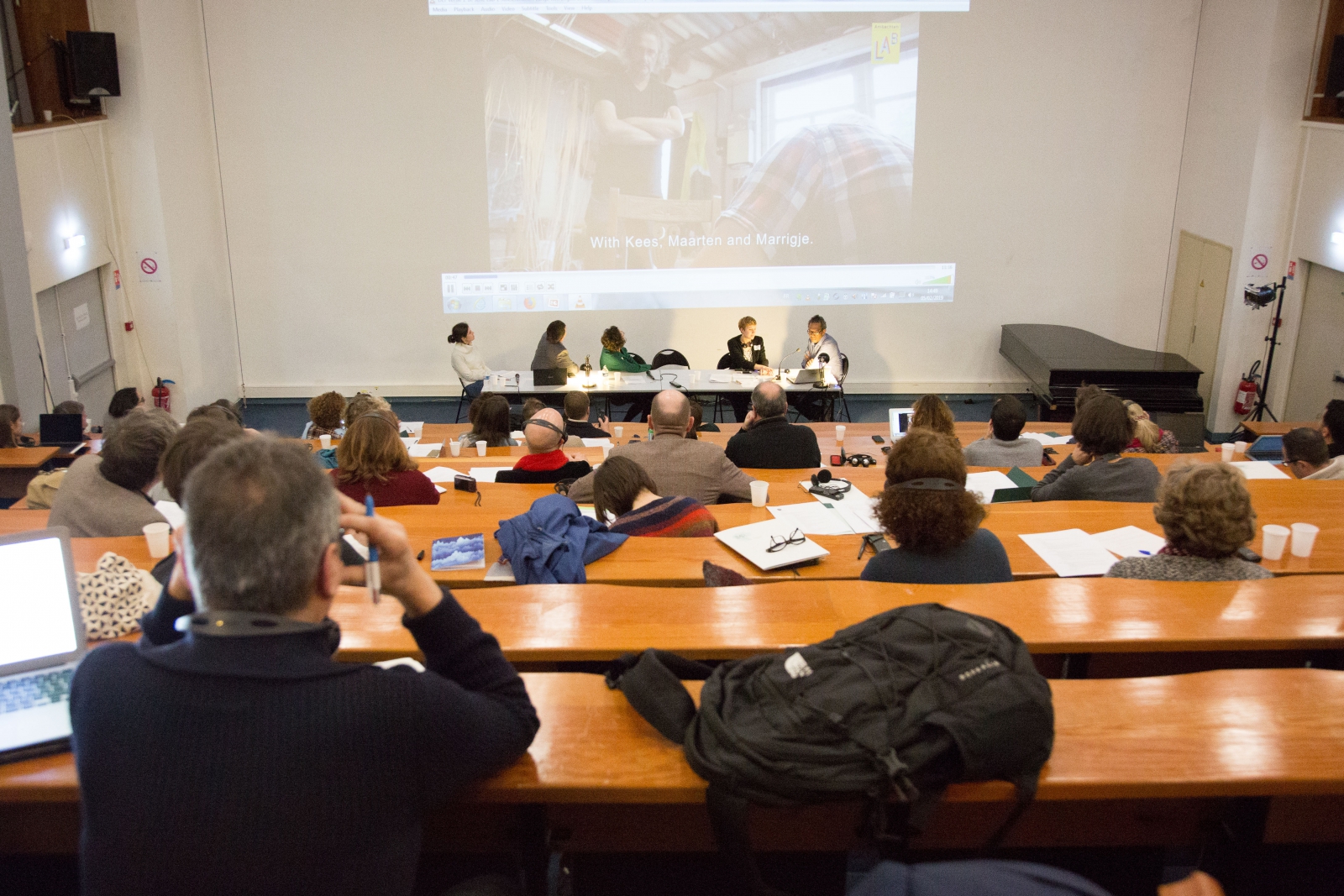Report of the International Conference: Intangible Cultural Heritage, Museums and Innovation (5.2.2019, Aubusson)
Welcome
Séverine Cachat (Maisons des Cultures du Monde - Centre français du patrimoine culturel immatériel) and Emmanuel Gérard (Cité internationale de la tapisserie) welcomed the participants to the International conference on 'Intangible Cultural Heritage, Museums and Innovation'. The day was moderated by Armande Cernuschi (Fourvière Fondation & France PCI).
Introduction
Jorijn Neyrinck (Workshop intangible heritage Flanders) continued with a brief introduction on the Intangible Cultural Heritage and Museums Project (IMP), to which this International conference connects. IMP wants to explore the variety of approaches, interactions and practices on intangible cultural heritage in museums and investigate how museums can play a role in the safeguarding of these living heritage practices, by working together with its practitioners in this process (read more about IMP in the ‘about-section’). IMP does this by inviting people from throughout its five partner countries (The Netherlands, Belgium, Italy, France and Switzerland), to share their experiences, successes as well as the obstacles they have encountered.
Intangible cultural heritage and Museums in France: a survey
Isabelle Chave presented the first results of a national survey, conducted in the second half of 2018 by the French Ministry of Culture. Elaborated with the support of the 'Fédération des écomusées et des musées de société', the Service of the Museums of France and the Department Head of Politics of the Public (Ministry of Culture), it provides an overview of the effective recognition of intangible cultural heritage in more than a hundred museums, ethnological museums and so called 'écomusées' in France. Up until this study the Ministry did not possess a full picture of how museums across France apprehended intangible cultural heritage, stated Isabelle Chave. She went on to explain the main objectives of the survey:
- To define ICH’s place in the governance tools of French museums
- To determine the integration of intangible cultural heritage in cultural events and mediation and in educational projects
- To highlight some inspiring examples of such projects
The preliminary findings allowed for a number of assertions to be made which demonstrate that intangible cultural heritage is a real challenge to museums:
- Most museums associate intangible cultural heritage with terms such as artisanal know-how, collective remembrance and legacies, and oral archives, which shows that the UNESCO’s official definition of ICH is only partially understood.
- For a large majority, intangible cultural heritage can help strengthen social ties and a sense of identity. Inhabitants of a territory can often times partake in the process, be it a cultural project, an exhibition or an ethnological survey. Through intangible cultural heritage, the individual is brought back at the heart of patrimonialization. By it’s very definition, intangible cultural heritage is prone to inclusivity and co-construction, hence why most of the interviewees believe that intangible cultural heritage can add exiting new dimensions to existing projects.
- Almost 3/4 of museums have never received a training dedicated to intangible cultural heritage but 80% of them would like to.
- 50% of scientific and cultural projects in museums take into account intangible cultural heritage. However in the years to come, intangible cultural heritage will play a bigger role in subsequent scientific and cultural projects.
- Museums are still unfamiliar with the National Inventory: it is necessary to build bridges between museums and tools such as the National Inventory in order to make them relevant.
- Innovation is mostly noticeable in scenographic arrangements and specifically in immersivedevices. As a general rule, most museums still do tend to apply standard practices and techniques to intangible cultural heritage.
In the second stage of the survey, ten in situ interviews were conducted in order to gather more in depth information about some of the projects. These interviews took place in structures that were diverse in size, status and institutional linkage. They highlighted diverse inspiring projects: mediation programs, workshops, digital technologies, participatory projects, immersive devices…
The results of the study will be disseminated through different mediums:
- A vademecum, published by the Department for piloting research and scientific policies
- A so-called ‘muséofiche’ (a guide for museums) edited with the support of the Service of the Museums of France
- An online publication on the IMP-website
- A two-day training at the French national institute of cultural heritage in 2020
You can read more details on the results of the survey here.
Keynote: 'Museums, intangible cultural heritage and innovation through participatory methodologies'
Filomena Sousa (Mémoria Imaterial) started her presentation with providing some basic information on the concepts behind the paradigm of intangible cultural heritage, as promoted in the UNESCO 2003 Convention (the notion of 'domains on intangible cultural heritage', its participatory nature including communities, groups and individuals in safeguarding efforts, its transmission between generations, its future-orientedness, et cetera.) She elaborated on the relevance and imporantance of safeguarding intangible heritage because
- its relevance in relation to dialogue and cultural diversity
- its potential roles in relation to sustainable development
- the fact that it is undervalued (compared to tangible and natural heritage)
- the fact that it is endangered, by forces of globalization and social transformation.
She continued hightlighting the positive aspects of the practice of museums in relation to safeguarding intangible cultural heritage, such as:
- the fact that there are more intangible cultural heritage activities - e.g., exhibitions and inventory projects;
- the use of participatory methodologies – e.g., training actions, workshops and debates in the museum;
- the bigger visibility of the practitioners and cultural expressions;
- museum functioning more and more as a "contact zone“ (J. Clifford) - relationship between actors of intangible cultural heritage;
- the rise of activities that cross different domains of intangible heritage
- activities that cross intangible heritage with "new traditions", new technologies, pop culture, modern art,...
- the production of knowledge on intangible heritage
And indicated some points of improvement as well:
- direct contact with living heritage (in situ)
- intangible heritage safeguarding in its own context, with practitioners, in its place and
- time (again, in situ)
- reducing misunderstandings on conceptual definitions
- promoting information among communities, groups and individuals and be informed by them
- Improving teams/networks with different intangible cultural heritage actors
- working with professionals of participatory methodologies
Sousa ended her presentation with the following critical statement, in relation to the theme of innovation that was under scrutiny during this international conference:
Innovation is important but
will not be relevant
if the practice and the meaning of the tradition is lost in the original context,
for their communities.
|
ADDITIONAL READING Sousa, F., Intangible Cultural Heritage. Memoriamedia eMuseum. Methods, techniques and practices (2016 Alenquer). |
The practitioner's voice
The conference continued with three presentations by practitioners of intangible heritage in France. Afterwards, these practitioners were questioned on their views on working with museums in the context of safeguarding their heritage.

-
Marie Boyard & Aurélie Dumain See PPT - Watch video
-
Delphine Mangeret See PPT - Watch video
-
Paul Terral See PPT - Watch video
This session was moderated by Eric Alendroit (Service régional de l'inventaire, Région Réunion).
Inspiring museum examples on intangible cultural heritage
During the next part of the conference, a selection of museums from Belgium, The Netherlands, Switzerland and France were asked to present their work on intangible cultural heritage, linked to the topic of innovation:
|
Panel 1
This session was moderated by Armande Cernuschi (Fourvière Fondation & France PCI) |
|
Panel 2
This session was moderated by Pierre Sanner (France PCI) |
Reflections on the day
After concisely summing up the central points of Isabelle Chave’s and Filomena Sousa’s speeches, Cécile Duvelle (former Chief of the Section of Intangible Heritage Section of UNESCO and Secretary of the Convention for the Safeguarding of the Intangible Cultural Heritage) discussed the three key terms of the day: intangible cultural heritage, museums and innovation.
- Intangible cultural heritage is made up of three words that hold the same weight: ’Intangible’ (conceived on a negation: the knowledge required to create something can neither be amalgamated nor can it be dissociated from the final product), ‘cultural' (concept of belonging, concept of identity for a defined community) and ‘heritage’ (concept of transmission). By definition, intangible cultural heritages are in permanent state of regeneration, they carry a contemporary social function.
- Museums: They are places for interpretation and centralisation of artefacts. Museums have historically been focused on tangible heritage and its preservation and conservation. How can museums reinvent themselves in order to embrace intangible heritage ? How can museums implement safeguarding of intangible cultural heritage?
- Innovation: Why should you innovate ? To not innovate is synonymous with extinction.
Cécile Duvelle stressed some of the difficulties and major risks that may occur during the integration of intangible cultural heritage in museums:
- There is not always a consensus among members of a community.
- To include members of a community in the decision-making process de facto implies working with individuals that may not always be familiar with how museums tend to operate.
- There is a mutual distrust between museums and communities.
- Opening and sharing the practices of a close-knit community with a much broader audience can sometimes lead its members to a sense of loss of control over their heritage.
- Commercialisation
In order to avoid those risks, it is paramount to work hand in hand with local communities to plan out axes of development. She draws an analogy between intangible cultural heritage in museums and Magritte’s painting ‘The Treachery of images’: to host tangible historical artefacts whilst at the same time not betraying intangible cultural heritage's principles is indeed a real challenge for museums. Cécile Duvelle pointed out that all the presentations of the day offer solutions to these challenges:
- The emancipation from the spacial constrains of museums
- The diversification of what constitutes objects and subjects of patrimony
- The disintegration of classical definitions of cultural patrimony and of traditional instances of gouvernance
Cécile Duvelle highlighted that today’s presentations have shown the impossibility of integrating intangible cultural heritage in museums whilst keeping up traditional structures in place. Museums have to become co-construction spaces where tradition can adapt to our contemporary way of life and to a modern economy. Museums are also spaces dedicated to cultural democracy where know-how and knowledge meet. Intangible cultural heritage is a driving force to incite museums to step out of their comfort zone.
Co-creation: Théâtre des Origines and the Cité internationale de la tapisserie
The Théâtre des Origines has been performing in the streets of Occitanie, Southern France, for fifteen years in close contact with local communities, revitalizing and recreating seasonal rituals. From Carnival to 'Martror', the Festival of the Dead. The Théâtre des Origines invites us to re-think the relationship between Man, Nature and the City.
Rooted in popular theatre and carnival traditions, the creations of the Théâtre des Origines aim at raising awareness on our intangible cultural heritage through itinerant, inter-disciplinary and interactive performances. The Théâtre des Origines have especially designed a concept of 'burlesque conference' about the specificities of intangible cultural heritage, dedicated to a wide audience. They experience an evolutive project that adapts to different performing contexts, inspired by regional cultures and picking up exemples in intangible cultural heritage of the local communities. After Occitanie, the Théâtre des Origines has been invited in residency at the French Center for intangible cultural heritage located in Western France, and developed a new version of their 'conference' integrating living heritage in Britany.
In the frame of the Intangible Cultural Heritage & Museum Project, the Théâtre des Origines has been hosted during one week at the Cité internationale de la Tapisserie in Aubusson, a small town located in Central France (Limousin) and famous for its art of tapestry, inscribed in 2009 on the 2003 UNESCO lists. To get to know local context and intangible cultural heritage, they met and interviewed weavers, artists and inhabitants of Aubusson, then performing at the Cité during the 4th International Conference of IMP.


